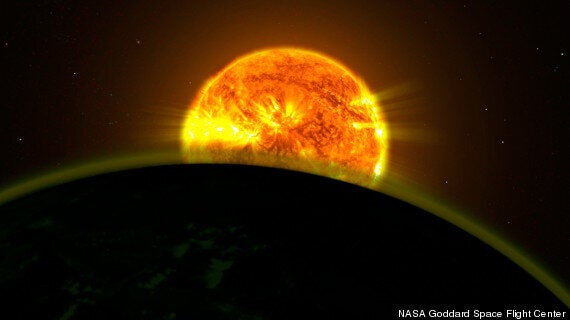The Hubble Telescope has found clear signs of water on five exoplanets.
Two teams of scientists made the discovery, detecting atmospheric water on the catchily titled WASP-17b, HD209458b, WASP-12b, WASP-19b and XO-1b.
WASP-17b is described as having an "especially puffed-up atmosphere".

An artist's impression of hot the planets may look
The planets in question are "hot Jupiters", massive worlds that orbit close to their host stars.
Avi Mandell, a planetary scientist at NASA's Goddard Space Flight Center in Greenbelt, Maryland, said: "We're very confident that we see a water signature for multiple planets.
"This work really opens the door for comparing how much water is present in atmospheres on different kinds of exoplanets, for example hotter versus cooler ones."
The studies were part of a census of exoplanet atmospheres led by L. Drake Deming of the University of Maryland in College Park.
Infrared wavelengths were analysed to detect the presence of water.
Deming said: "To actually detect the atmosphere of an exoplanet is extraordinarily difficult. But we were able to pull out a very clear signal, and it is water."
Hubble's high-performance Wide Field Camera 3 is one of few capable of peering into the atmospheres of exoplanets many trillions of miles away.
These exceptionally challenging studies can be done only if the planets are spotted while they are passing in front of their stars.
Researchers can identify the gases in a planet's atmosphere by determining which wavelengths of the star's light are transmitted and which are partially absorbed.